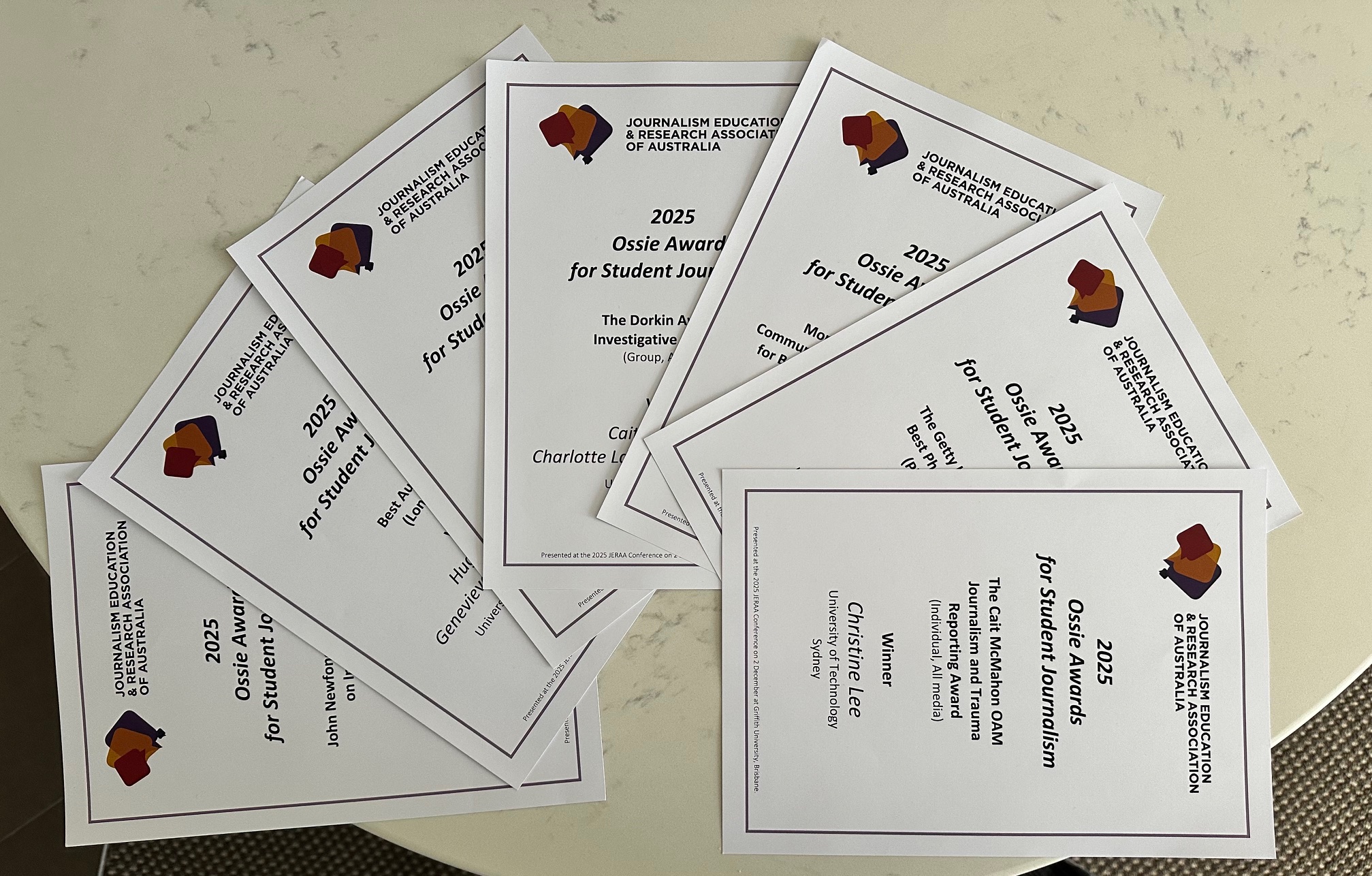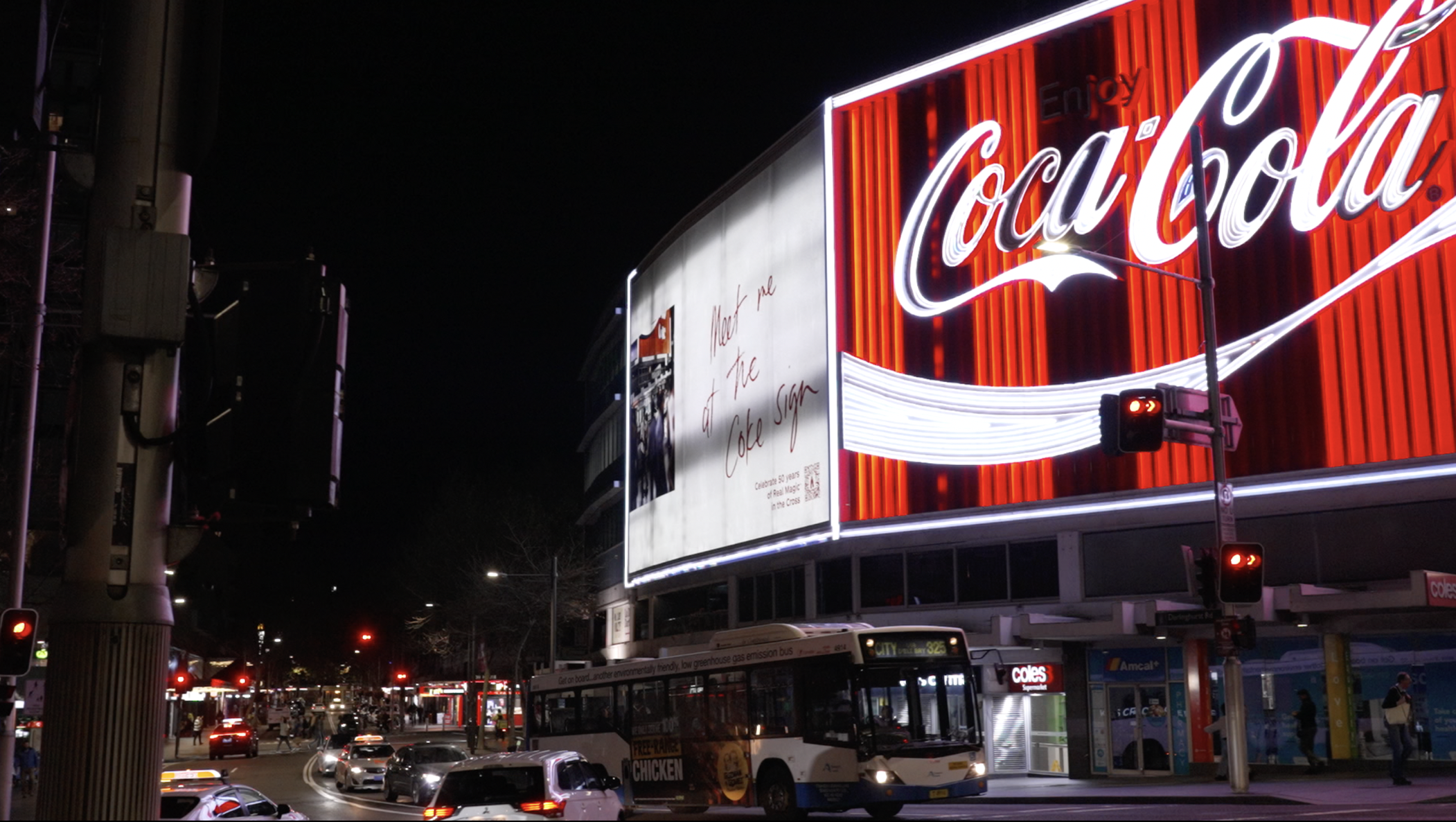By Sarah Goff-Tunks, Caitlin Maloney, Ike Morris and Jessica O’Bryan.
From figurines to statues to clothing, you can’t go very far without spotting an elephant in Thailand.
The elephant is the national animal of Thailand, and is largely considered a symbol of strength, love and wisdom by the country’s citizens.
For Narinda “Dada” Tikha, elephants have always played a part in her life, living alongside them at the Elephant Peace Project in Thailand’s northernmost province Chiang Rai, which has been passed down from her family through generations.
“The relationship between my people and elephants is [a] very deep connection, not only about taking care, about healthcare or not only taking care about the physical life,” Dada said.
As of 2024, there are 2,798 captive elephants in Thailand’s tourism trade, with nearly 75 per cent of all captive elephants in Asia used for tourism and entertainment purposes, according to World Animal Protection.
People for the Ethical Treatment of Animals’ (PETA) Asian campaign manager, Abigail Forsyth, agreed elephants are an integral part of the tourism industry in Thailand.
“People put elephants and Thailand together, and it’s definitely something that tourists really associate with Thailand, and they really want to see elephants on their trips,” Forsyth said.
Founded in 1980, PETA is an international animal rights organisation that opposes animals being used for food, clothing, entertainment and research.
As part of her work, Forsyth has uncovered many unethical practices in the elephant tourism industry, warning of “sham practices” that prioritise their business over the protection of the elephants.
“People have realised that there’s a lot of money to be made by kind of shifting in this business idea and that’s why we have so many of these sham sanctuaries,” she said.
The captive elephant tourism industry has become one of the fastest growing tourist attractions across Asia, recording sales worldwide between $581-770 million USD per year before the COVID-19 pandemic.
Each day, 13,700 people visit elephant venues around Thailand. Consequently, Forsyth believes there is an increasing need to educate tourists to halt the growth of the industry.
“Once that money stops coming in, that helps to put an end to these industries,” she said.
But there’s one activity that has grown in popularity amongst tourists in recent years which has become a lucrative venture for businesses: elephant bathing.

A mahout bathing an elephant at the Elephant Peace Project. Photo: Sarah Goff-Tunks.
Approximately 14,475 people globally purchase elephant bathing activities per day, generating $828,000 USD in sales a day.
According to World Animal Protection, the cheapest elephant bathing activity available for visitors is $57.20 USD.
“While there is a demand for it, businesses are going to be there willing to take people’s money,” Forsyth said.
Bathing elephants can also be unsafe for tourists, as well as cruel to the animals, reported World Animal Protection.
While Forsyth has criticised the marketing of such activities to drive profits, Dada believes locals including herself are reliant on the tourist trade in order to stay afloat, a task that has been challenging for the Elephant Peace Project since the COVID-19 pandemic.
“We are living with the elephant, we have [the] responsibility about [finding] the food… I think it’s very challenging for us, so now we depend on the tourists… no tourist [is] consequent to the life of [an] elephant directly,” said Dada.
However, the popularity of elephants among tourists creates opportunities for unethical practices to arise, with a lack of regulations into the definitions and differences between “elephant sanctuaries” and “elephant parks”.
“I think people are just really unaware, and they hear the word ‘sanctuary’, they hear the words, ‘eco’ and ‘conservation’, and they believe that they will be safe and that they will be giving their money to a place that’s helping elephants,” said Forsyth.
She believes many businesses use “humane-washing terms” to encourage visitors on the false premise of conservation.
“Constantly I see ‘sham’ sanctuaries talking about conservation and even rescuing an elephant from a wildlife camp, and taking care of them,” she said.
“That’s not conservation. Conservation is the protection of a species in their habitat. Saving an elephant is great, but helping to preserve their natural habitat for future wild populations, that’s conservation.”

One of the elephants living at Elephant Peace Project, in Chiang Rai, Thailand. Photo: Sarah Goff-Tunks.
In Forsyth’s view, a “true” sanctuary wouldn’t force animals to breed, or allow any close human contact, such as feeding, washing or riding.
“That’s to protect not just the elephants, but also the humans. These are huge animals who in a very short number of seconds can have a really devastating effect on visitors,” Forsyth said.
Dada insisted that her family’s organisation is different to other elephant destinations.
“This project – Elephant Peace Project – we are not elephant riding camp, we are not elephant show, we are not elephant sanctuary,” she said.
“We [are] different from them, because elephant sanctuary, elephant rescue, elephant retirement, all of them have money, and they bought [the] elephants from our people, culture… but they [are] never living with [the] elephants. They never know about the real culture.”
A common issue across elephant tourist destinations is the use of bullhooks – metal rods fitted with a sharp hook used to control elephants. The devices are often jabbed into sensitive areas of the elephant’s body, such as around their ears, eyes, mouth, trunk and feet.
“A lot of mahouts (elephant carers) still carry bullhooks with them, so those elephants are just under that constant threat of something bad happening to them,” said Forsyth.
“Even if we don’t see mahouts hitting the elephants or using the bullhooks, they often have them there as a reminder of what they can do.”
Central News did not see bullhooks used at Elephant Peace Project. However, elephants were seen being pulled by their ears.
According to Forsyth, bullhooks are not the only type of physical abuse elephants can be subject to.
“Sham sanctuaries usually won’t use bullhooks because tourists no longer like to see them because of the awareness that has now been spread on social media of how these tools are used to hurt the animals,” she added.
“But we often see instead the mahouts pulling elephants by their ears or kicking them in sensitive areas or poking them.”

Historically, mahouts have been dedicated to taking care of elephants. Photo: Sarah Goff-Tunks.
Riding elephants is another practice that has been condemned by animal rights advocates, especially as perceptions around the world have changed across the last 15 years.
Although elephant riding is still legal in Thailand, organisations including PETA have been pressuring the government to ban the practice.
“It’s cruel. They have to use violent training methods to subdue the elephants, and I think people also… there’s misconceptions around the strength of these animals,” said Forsyth.
“Elephants are such an important symbol and part of Thai culture, so they should really be respected and taken care of and protected.”
Forsyth said many tourists may have misconceptions about the damage riding elephants can have on the animals’ health and wellbeing, due to their enormous size.
“They’re extremely strong animals, but years and years, decades even, of having the chair that they put on top of the elephants’ backs and then multiple humans at a time, it can lead to awful injuries of their back,” she said.
“It might be a 10 minute elephant ride for you, but that’s all day, every day for that elephant, and over time, the damage that that does to their physical health is huge.
“The damage that happens to these animals’ mental health from the captivity, the confinement, the removal of all of their autonomy and choice over what they do and who they interact with, all these things have a huge negative effect on their wellbeing.”
The Elephant Peace Project’s website states that it condemns the practice of elephant riding: “The park has a strict no riding policy. We care about the welfare of the elephant, thus riding the animal doesn’t align with our values”.
However, Dada told Central News she has a different perspective on elephant riding.
According to Dada, when elephant riding camps were first opened, elephants only worked for a few hours and then rested. She said once tourism grew though, elephants were being worked for over seven hours a day.
“In my perspective, elephant riding camp is not a bad thing,” Dada said.
“Elephants eat a lot. They have to work a little bit for exercise, for health. In my perspective, if elephant riding camps work only two and three hours, I say [it’s] okay.”
She added: “But seven to eight hours [is] too much for working.”
Dada acknowledged attitudes surrounding elephant riding have changed, with many elephant camps converting to sanctuaries.
“Many of the foreigners don’t like elephant riding camps, elephant shows. And then some businessmen created [new] activities for the elephant. We call [it] elephant sanctuary, or elephant retirement, or elephant rescue,” she explained.
However, Dada was critical of elephant sanctuaries and said she was concerned that they don’t allow elephants enough exercise or activity.
“This group, they have a lot of money, and then they buy elephants from the native people like us,” she said,
“I never say that elephant sanctuary is the best way. Why? Because elephants eating is great in my purview, but in my perspective, we need to add some more activity for the elephant sanctuary… two or three hours for walk[ing], for exercise and for health.”

A mahout riding an elephant at the Elephant Peace Project. Photo: Caitlin Maloney.
Forsyth believes that tourist agencies must also take on responsibility in ensuring ethical standards, and that the introduction of the Animals (Low-Welfare Activities Abroad) Act 2023 in the United Kingdom is a step in the right direction.
“Tour operators, tour agencies and organisers do have an obligation to know exactly what product they’re selling and to inform their customers of that, because more and more people are trying to be more conscious of ethical and animal issues when they’re travelling,” she said.
The Act aims to regulate animal-related activities available for citizens to participate when travelling overseas where activities that have been deemed to fall under low-welfare standards will be an offence to sell or offer to sell in the UK.
“If other governments followed suit [with] those laws, we would, I’m sure, see a huge reduction in the types of tours that are still offering activities like riding camps,” said Forsyth.
Forsyth hopes that other nations start to implement similar laws. While Australia has laws to protect animals in the country, there is nothing legislated to prevent travel agencies from promoting unethical tourist activities around the world.
Regulations in Thailand also remain limited.
Since 2009 Thailand’s Ministry of Tourism and Sports in the Department of Tourism mandated that elephant tourism destinations should be inspected and certified every two years. However, with no incentives and no penalties for non-compliance the regulation is rarely enforced.
As of 2020, only six elephant tourism destinations have been certified by the Tourism Authority of Thailand and nine by the Department of Livestock Development out of an estimated 250 organisations throughout Thailand.
Currently, there are 18 Acts which govern the care and treatment of elephants, however only one of the Acts regulate the domestic and commercial use of elephants – the Draught Animal Act 1939.
They’re really exploited in so many ways and used for so many different exploitative reasons, whether it’s for money or for political gain.
Forsyth was critical of these regulations and said they weren’t doing enough.
“There’s a lot of room for exploitation within these laws. These so-called domestic elephants really do need their own set of laws and guidelines of how to take care of these animals,” she said.
“Often these laws are not enforced in the correct way and certainly there needs to be stronger laws to really protect elephants in Thailand.”
Cruelty in the elephant tourism industry is not an issue isolated to Thailand. According to PETA Asia, elephants are traded and imprisoned for entertainment in Vietnam, Laos and Myanmar.
Forsyth said elephants are still regularly used in performances at zoos and circuses across Asia. In Sri Lanka, they are trained for, and feature in, an annual “elephant football” match as part of the Chitwan Elephant and Tourism Festival.
“I hear [about] elephants in circuses, and you think that’s a thing of the past, and it’s very outdated, but … they’re still coming [to other countries] from Asia,” she said.
“They’re not just elephants born from other captive elephants in these countries, they’re still being taken from the countries that they should call home and sent to a lifetime of slavery in in circuses or in zoos.”
Elephants have also been used to promote healthy diplomacy between countries. In January, Myanmar’s junta regime gifted six elephants to the Great Moscow State Circus in Russia to commemorate the 75th anniversary of the two countries’ diplomatic relations.
Speaking to Russian media at the time, the general director of the circus, Edgard Zapashny, said the elephants’ wellbeing was prioritised during their journey, and that they were “settling in comfortably”. They were then transferred to the Moscow Zoo in March.
“These [animals] are often used as diplomatic pawns… It’s always a symbol of friendship for countries to gift or sell animals like elephants abroad. They’re really exploited in so many ways and used for so many different exploitative reasons, whether it’s for money or for political gain,” Forsyth added.
“It’s always cruel and it’s something that PETA would work to put an end to and encourage the public to [use] their money to support places that don’t profit from their abuse.
“This isn’t just a Thailand problem, and it’s not just up to [Thai] lawmakers to protect these animals, because tourism is a global issue. This really takes global leaders to help inform their own country’s tourists of the suffering that animals can endure in the tourism industry worldwide.”

Visitors are permitted to have close interactions with elephants at the Elephant Peace Project. Photo: Sarah Goff-Tunks.
The cruelty exhibited in these destinations has proved not just detrimental to elephants, but humans as well.
In January, 22-year-old Spanish tourist Blanca Ojanguren García was killed after an elephant pushed her at an elephant centre in Thailand, causing her to fall and suffer a severe head injury.
She was bathing the elephant when the incident occurred at the Koh Yao Elephant Care Centre, with the elephant believed to have reacted under immense stress outside of its normal environment. The mahout involved was charged with negligence soon after García’s death.
Forsyth said the incident was “really tragic” and a timely reminder of the “inherent cruelty and dangers that exist” when forcing animals to interact closely with humans.
“Unfortunately, anything can happen to suddenly stress or scare or worry an elephant, and it just takes them to turn around with their trunk or [another part of their body], and that can have really devastating consequences,” she said.
“The answer is not to have them in any confined facility where they’re forced to perform or interact with humans, but also to preserve their natural homes so that there’s also not so many conflicts between the wild animals, the wild elephants, and humans.”
We need to encourage people to dig deeper and to really think, ‘Does this [sanctuary] put the animal’s best interests in the forefront of what they do?’
Forsyth said she would like to see a better standard of treatment for elephants across the board, even if that means compromising long-standing cultural practices.
“Culture and tradition should certainly never be used as an excuse to stunt social growth and positive growth,” she claimed, “and we should be moving towards more ethical treatment of elephants.”
“I understand that elephants have had a huge role in the history of Thailand, and they’re a very important animal in this country … so I would also really hope that [governments] would want to make changes to better protect these animals.”
“We know so much more than we did 10 years ago, [even] 100 years ago, and we know our understanding of animals is so much deeper … and that should also help guide change.”
Forsyth offered a simple piece of advice for tourists wishing to engage with elephants on their travels.
“[Look] for a true sanctuary that only offers observational tours [and] keeps you at a safe distance from the elephants, for your own safety and the safety of the elephant,” she said.
“Bathing the elephant, feeding the elephant, touching the elephant, [and] standing next to the elephant for photo opportunities … is not safe for you and it does not have the wellbeing of the elephant in mind.
“We need to encourage people to dig deeper and to really think, ‘Does this [sanctuary] put the animal’s best interests in the forefront of what they do?’”
In doing so, Forsyth hopes tourists would develop more empathy for animals in these environments and consider the broader impact of their visit on the elephants’ health and wellbeing.
“It’s now trying to get people to think about the entire life of the elephant. Not just the one hour that you’re there with them, or that five minutes [where] you had a photo with them, but the fact that you are just one of thousands and thousands of tourists a week that are having a photo with that one elephant.”
Main image of tourist program at Elephant Peace Project by Caitlin Maloney.
Additional translations by Narawitch Theangprasert.
Video by Sarah Goff-Tunks, Caitlin Maloney and Jessica O’Bryan.
Central News did not take part in any tourism activities at the Elephant Peace Project. Journalists were invited to visit the organisation for free and were provided with hospitality.
UTS journalism students travelled to Thailand as part of The Foreign Correspondent Study Tour, a University of Technology Sydney programme supported by the Department of Foreign Affairs and Trade’s New Colombo Plan, and working with Chiang Mai University strategic communications students in association with Chiang Mai University.



























